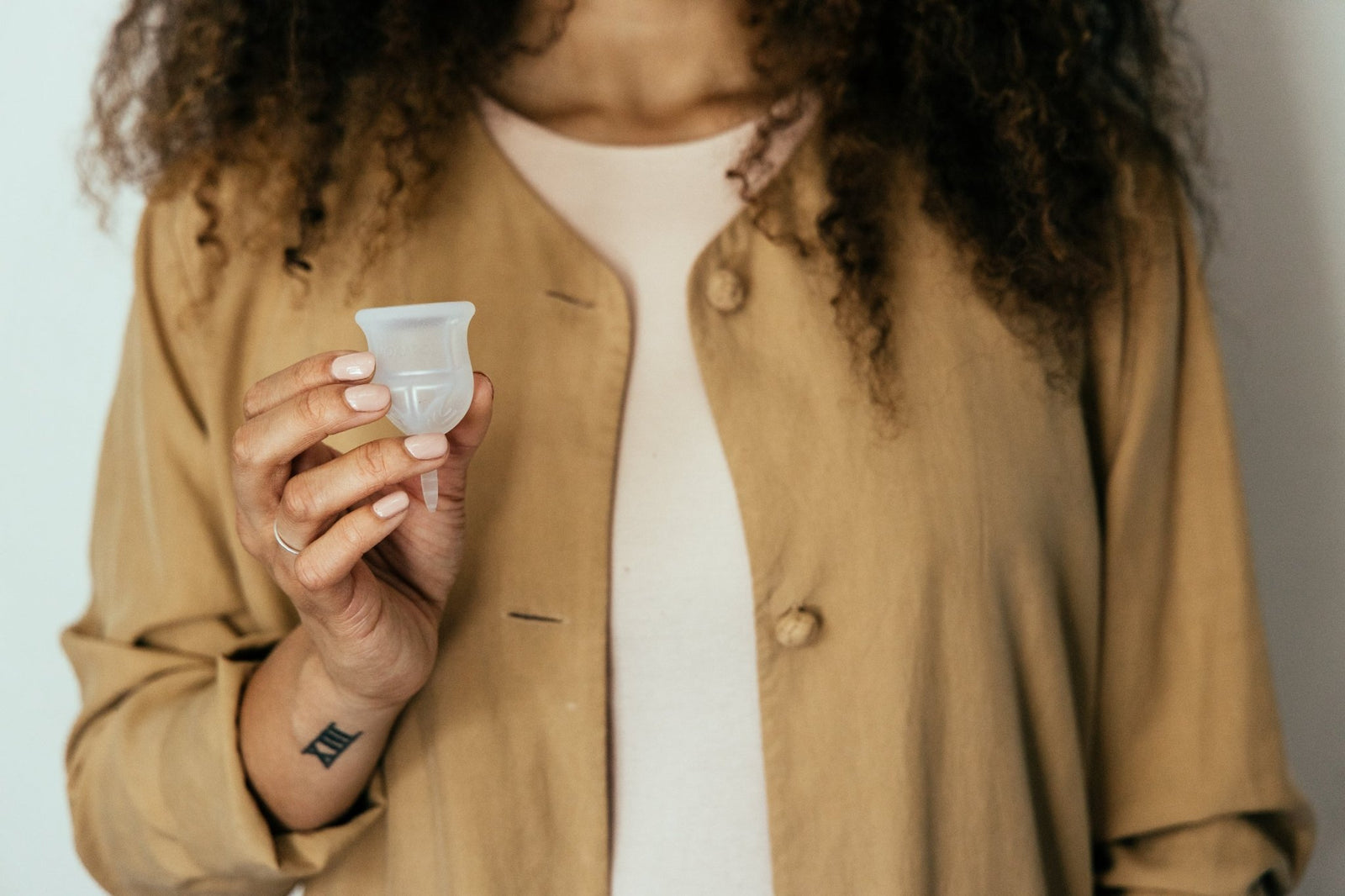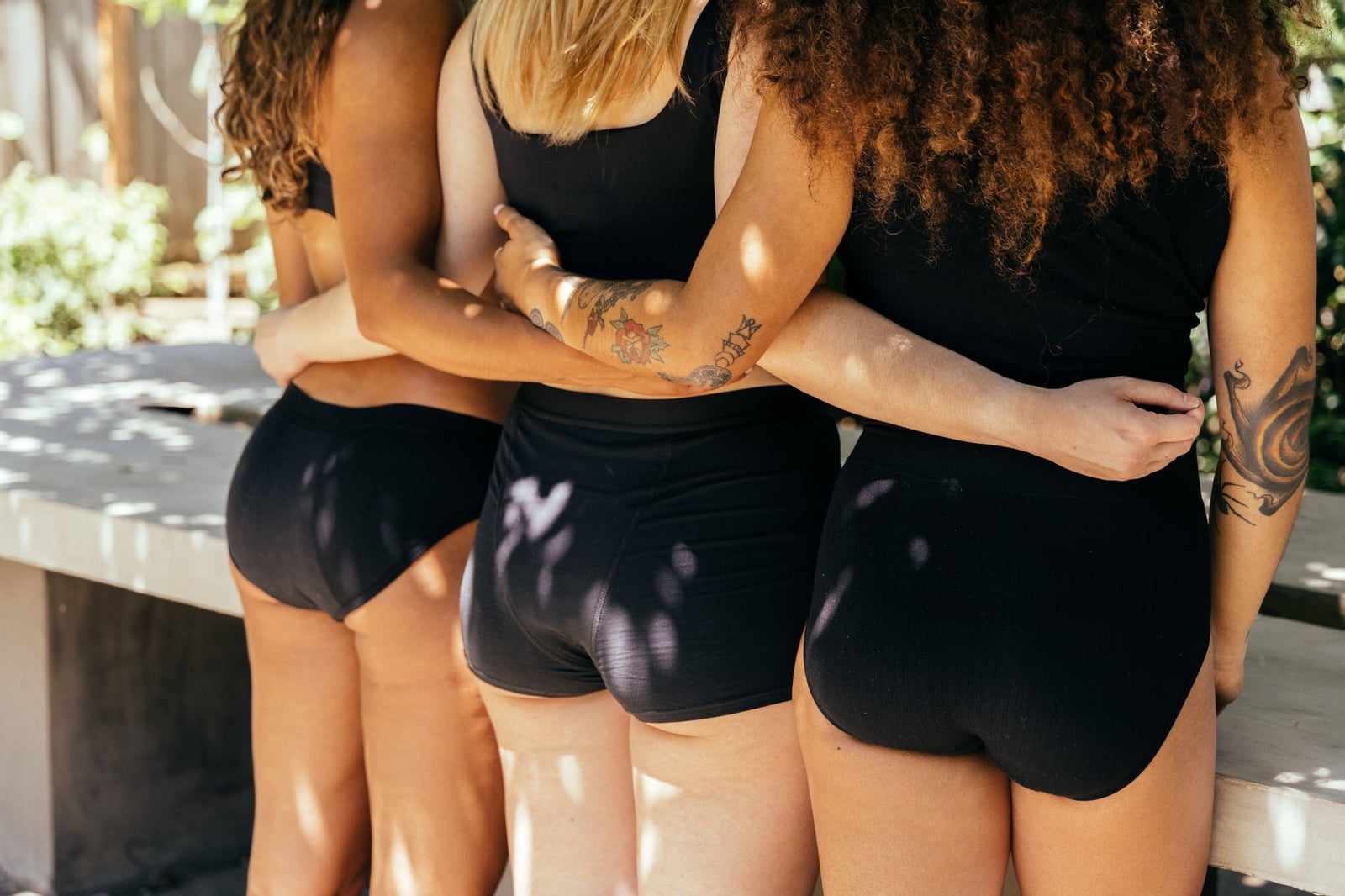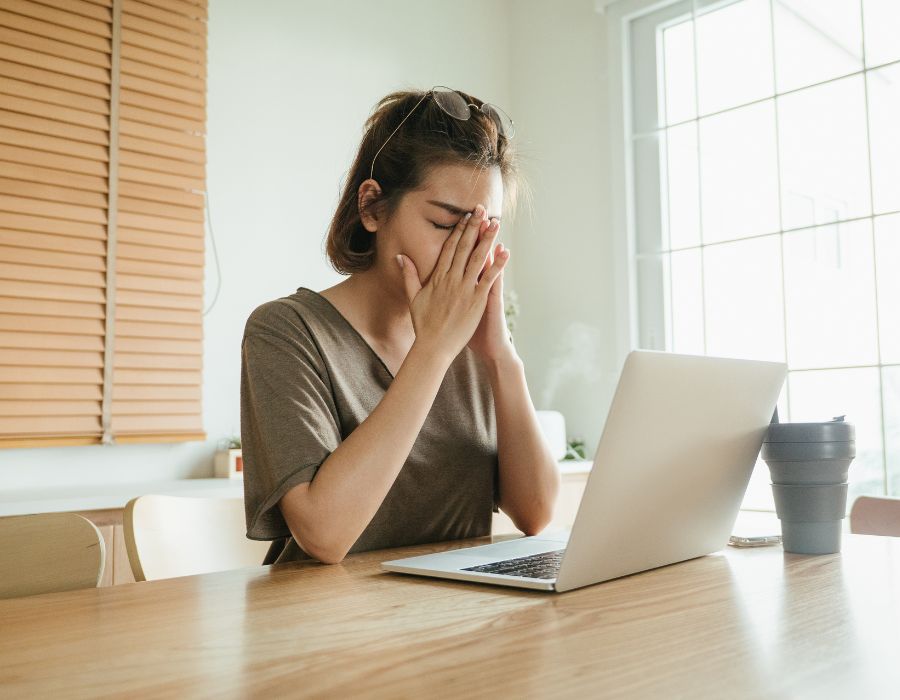
When it comes tosustainable period care products, menstrual cups are one of the best options. A high-quality cup, like VOXAPOD, is comfortable, hygienic, non-toxic, reusable, and environmentally-friendly––what more could you ask for? Whether you’re new to menstrual cups or you’ve been using them for a while, you may have a few questions about how to clean or care for your menstrual cup––we have answers!
How to clean and care for a menstrual cup
A quick guide to cleaning your menstrual cup:
- Boil your cup for 5-7 minutes in clean, potable (drinkable) water before first use and between periods
- During your period and daily use, wash your hands with soap and water
- Remove your menstrual cup at least every 12 hours, empty contents, and rinse with clean, potable water, making sure to clear any debris in the suction holes (you can also use a natural, pH-balanced soap, but steer clear of soaps with dyes, toxins, chemicals, parabens, or fragrances)
- Re-insert your cup for next use
- When not in use, store your menstrual cup in a breathable bag or clutch to keep it clean and prevent bacteria growth

For a more detailed breakdown of cleaning and caring for your menstrual cup, read on. We share some pretty great tips that make learning to use a menstrual cup for beginners waaay easier (and less intimidating)!
How to boil, sterilize, and clean a menstrual cup before first use and between period cycles.
To begin, fully submerge your menstrual cup in clean, boiling water for 5–7 minutes. Avoid leaving it in for too long as it could cause the silicone to get softer or thinner. Don’t leave the cup unattended, and make sure there’s enough boiling water to prevent the cup from settling on the pan’s bottom, where it could be damaged.
Tip: place your cup inside a whisk and place whisk in boiling water to keep the cup from touching the bottom of the pan during boiling.

It goes without saying, you’ll want to be careful removing the cup from the water––it will be hot and could burn you. If you plan to use the cup immediately, run it under cold water first to bring it to a comfortable temperature. Otherwise, allow the cup to cool and completely air-dry before storing it in your case for your next use.
If you don’t love the idea of placing your menstrual cup inside your kitchen utensils, you can keep a separate pot just for this purpose. Either way, your period is a natural process that’s healthy, powerful, and essential––so make sure you get the care and hygiene your body deserves.
How to clean a menstrual cup during your period.
Always use clean, safe-to-drink, potable water to clean your menstrual cup before and after each use. You’ll also want to make sure the suction holes are clean and clear––removing build-up allows the cup to seal properly.
Tip: To remove debris, gently stretch each hole under running warm water or fill your cup with warm water and use the palm of your hand to cover the opening of the cup, flip it over, and then squeeze the contained water out through the suction holes.
If you plan to use a mild soap or other natural, all-purpose cleaner that might leave residue, please note that it could deteriorate the silicone of your cup and/or cause irritation when using your cup.
Use natural, pH-balanced soap
At least every 12 hours you should empty and clean your menstrual cup with potable (drinkable) water or with a natural, pH-balanced soap. Remember your vagina is pH-conscious and any unnatural products you use on your cup could disrupt your natural pH balance. Avoid any harsh products that are heavily scented or contain unhealthy, artificial dyes that may lead to vaginal irritation. Look for a gentle, pH-balanced product that is free from parabens, dyes, toxins, and fragrances.

How to clean or change your menstrual cup in a public bathroom + toilet.
We dedicated an entire blog post with all of our favorite pro tips on how to clean or change your menstrual cup in a public bathroom or when traveling. Trust us, it’s pretty simple!
- Wash your hands with warm water and soap.
- Take a wet paper towel or water bottle into the stall with you.
- Remove your menstrual cup and empty the contents into the toilet.
- Rinse your cup with the water bottle or wipe it off with the wet paper towel. If neither are available, you can wipe it with toilet paper, re-insert it, and clean it more thoroughly when you get home.
- Re-insert your cup and carry on.
Remember, most users can wear their menstrual cup for 8-12 hours (depending on the brand and your flow) before needing to empty or change their cup, so it is rare that you will ever have to change it in public. However, if you do have to, it turns out it’s not a big deal after all!
What not to use while cleaning your menstrual cup?
Can I use _____ to clean my menstrual cup? Well, a basic rule of thumb: if you wouldn’t clean yourvagina with it, don’t clean your cup with it!
Do not use the following to clean your menstrual cup:
- Bleach
- Vinegar
- Tea tree oil
- Fragranced or scented soaps
- Oil-based soaps
- Antibacterial soaps
- Rubbing alcohol
- Hand sanitizer
- Hydrogen peroxide
- Dishwashing detergent or soap
- Laundry agents or detergents
- Other harsh cleaners or chemicals
Why is my menstrual cup discolored or stained?
Menstrual cups may discolor slightly over time and use because, well, blood stains things, in general. Slight discoloration does not impact the effectiveness of your cup—although, if you notice the silicone has deteriorated or has a foul odor, you should discontinue use and replace your cup.
At VOXAPOD, we use premium quality, medical-grade silicone that is stain resistant, but most cup users will notice discoloration at some point (regardless of brand). It is completely normal. Menstrual cup stains are caused by the iron in your blood, and how quickly this happens varies based on your blood iron levels and how you’re rinsing and cleaning your cup (hot water sets stains, so we always recommend rinsing with cold water first).
How to remove stains or discoloration from my menstrual cup.
With continued use, some users may find their cup has become slightly discolored or developed stubborn stains. No worries, though! Here are some simple tips to keep your period cup sparkly clean and prevent or get rid of stains and discoloration on your menstrual cup. How to clean a stained menstrual cup.
-
Rinse your cup with cold water first before using warm or hot water to wash it to help prevent stains.
-
Don’t leave your cup in beyond the recommended time of the manufacturer (usually 8-12 hours)—doing so can create stains, a foul odor, or deteriorate your cup.
-
Clean your cup regularly and properly using the instructions and tips above to help prevent stains
-
Try the age-old trick of direct sunlight to help ‘bleach’ your cup! Set your cup in direct sunlight for a few hours, making sure it is out of reach of any furry friends or children.
-
To clean a stained menstrual cup, dilute ½ teaspoon of baking soda in a cup of warm water and soak your cup for a couple of hours before scrubbing it with a toothbrush or washcloth to help remove stubborn stains. Boil your cup afterward to remove any residue before using your cup again.
How should I store my menstrual cup when I’m not using it?
Store your clean menstrual cup in a clean, dry, breathable container, like an organic cotton pouch or clutch. Be sure not to store your cup in an airtight container, as breathability is important to prevent unwanted bacteria growth between uses.

Menstrual cups, like VOXAPOD, come with a breathable, reusable storage clutch that you can store your cup in between cycles or for easy travel. Once your cup is safe in its pouch, keep it in a cool, dry place, like your bedside table or underwear drawer.
When should I replace my menstrual cup?
As a personal hygiene product, a general guideline would be to replace your cup every 12 months. However, medical-grade silicone is very durable, and with proper care, VOXAPOD menstrual cups can last for several years. TheFDA (Food and Drug Administration) currently recommends replacing a menstrual cup every 2-3 years. We recommend inspecting your cup regularly and replacing it at any sign of deterioration.
Your vagina is amazing at self-cleaning, which means that you don’t have to worry about cleaning it. However, your cup will need to follow the right cleaning routine because your vagina is highly sensitive to substances that you put into it. If your cup is causing irritation or giving off a foul odor, you may have worn it beyond the recommended time, not cleaned it properly, or it could be a symptom of an infection. A healthy vaginal pH balance is between 3.5 and 4.5 and anything below or above this can be a sign of an infection. When in doubt, visit your gyno and get yourself checked.
Do you have a menstrual cup cleaning tip? We want to know about it––drop it in the comments!
 |
Jia Yu Wang is a historian, bookworm, and curious dog lover who enjoys watching historical documentaries and reading Wikipedia pages. Her current passion is in integrating historical writing with marketing to help others fuse the context and relevancy for many of the social and environmental issues we face today and thereby further growing a movement of sustainable change. When not diving into the worlds of the past, Jia indulges her inner food enthusiast by hunting down the best eateries around the world.
|




Hacking Intelligence
December 21, 2025
RECOVER YOUR LOST CRYPTO ASSETS & IMPROVE YOUR CREDIT SCORE WITH ASORE HACK INTELLIGENCE. NO UPFRONT PAYMENT REQUIRED.
Asore Corp. is a team of Cyber Intelligence, Crypto Investigation, Asset Tracing and ethical hacking experts. Working together to form a private cyber and crypto intelligence group focused on providing results.
Using the latest Cyber Tools, Open Source Intelligence (OSINT), Human Intelligence (HUMINT), and cutting edge technology, we provide actionable intelligence to our clients.
WHY CHOOSE US?
– Expert Cyber Investigation Services —Our cyber investigators operate professionally and anonymously to crack all firewalls known to man.
– Cryptocurrency And Digital Asset Tracking — We are able to track the movement of different crypto currencies and assets. If the asset has been moved, we are able to follow it.
– Strategic Intelligence For Asset Recovery — The first step to recovery is locating recoverable assets. Our experienced team will be able to walk you through the process.
Schedule a mail session with our team of professionals today via – asorehackcorp (@) gmail (.) com to get started immediately.
BEWARE of FABRICATED reviews and testimonies endorsing tricksters, do not get scammed twice.
Disclaimer: Asore Corp. is not a law enforcement agency and not a law firm. Like all legitimate private investigators, we can guarantee specific results. We apply our expertise and resources to every case professionally and ethically.